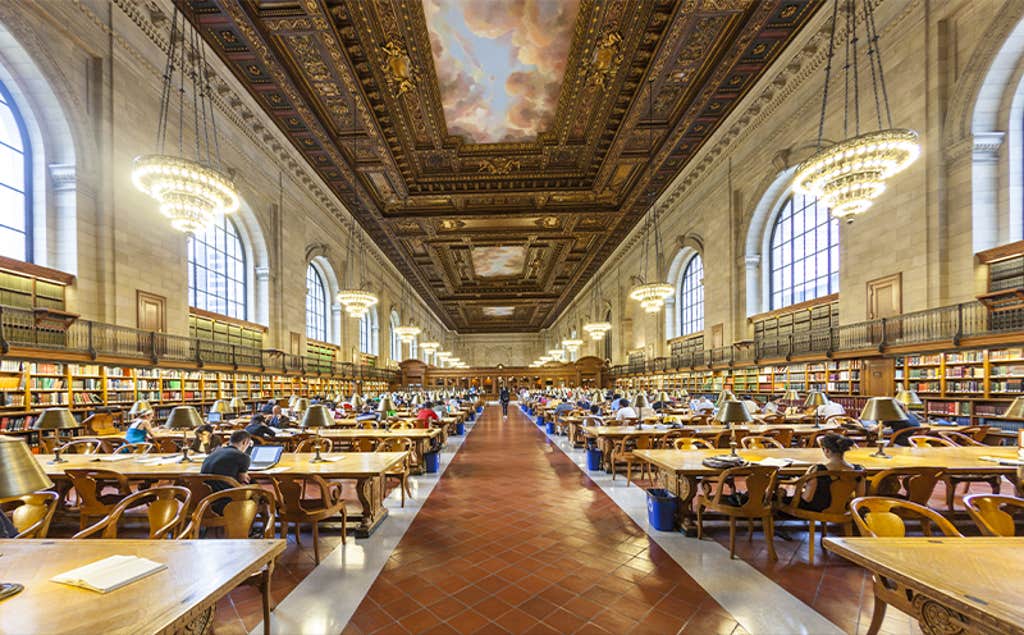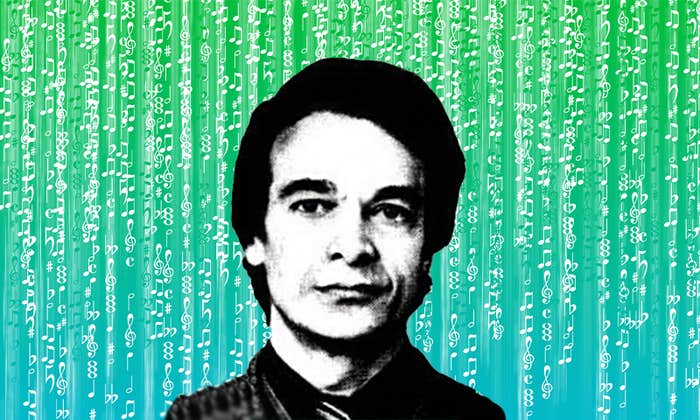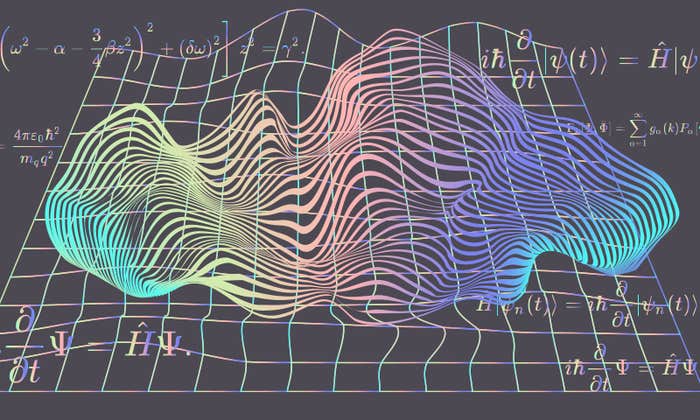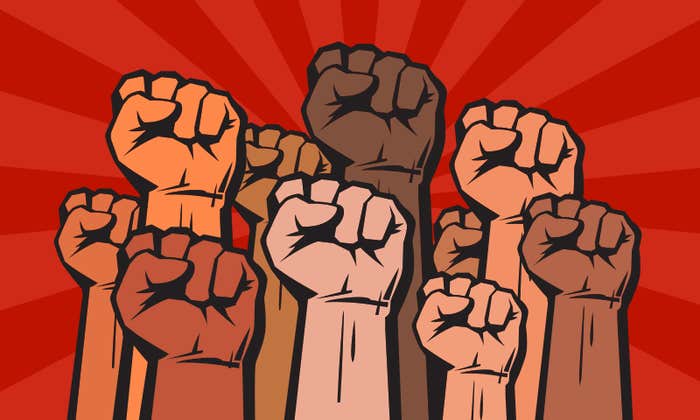We’ve all been there. In fact, I find myself there several times a day. A question emerges and my memory stumbles. Decades of education dematerialize into an expensive mist. I know I know this, or at least I should.
I reach for my phone and type:
Who painted that corner diner at night with those lonely looking people sitting inside?
But what if it hadn’t been so simple? What if—instead of having my screen cluttered instantly with infinite reproductions of Edward Hopper’s Nighthawks—I was forced to live in a period of contemplation? Of not knowing? Might that have generated a spark of curiosity?
If so, I might have found my way to the library. And while there, I might have stumbled on a good deal more about Nighthawks and its enigmatic portrayal of urban loneliness—as, once upon a time, as a Midwestern kid longing for a life in the big city, I did within the stacks at the Iowa City Public Library. There, I followed the streets of Hopper’s metropolis to the stories of John Cheever and Ralph Ellison, their characters often under the spell of Duke Ellington and Dizzy Gillespie, whose records I checked out. I could step backward, too, following Hopper’s urban themes to Degas and Manet—their gamines encountered with the longing felt in the pages of Proust.
Libraries might be our last bulwark against the digital degradation of life and learning.
Or I could fast forward through time, following the throughline of Hopper’s influence on another painter, George Tooker, who focused a paranoid gaze on waiting rooms and subway platforms to paint a bureaucratized modern dystopia. From there, it was a short trip to Zamyatin’s We or Orwell’s 1984. In the library, with its faint arboreal scent of binding glue, I was able to have my first encounters with a life beyond the prairies.
When I Google Nighthawks now, the Image Search feature of Google brings me first to advertisements for Amazon-peddled reproductions of the painting—some of them washed out and pale, others featuring the cast of Star Wars in place of Hopper’s anonymous figures—all of them available for about $11.95.
The internet, writ large, is now a universal medium. In the beginning, we were told the digital sphere would bring us together to share information and expand our perspectives, and now, there’s hardly a corner of our lives that it hasn’t touched. It governs nearly every aspect of how we read, learn, and connect to the larger world.

But while few parts of the world remain outside its reach, the internet leaves little room for discovery. Our curiosities in the digital environment are not so much sparked as they are confirmed. The system is designed to say “yes” to us, not challenge us. Over time, even the questions we ask begin to take on the smooth, antiseptic quality it was designed to reward. Digitalization has driven us further into ourselves and sects of the like-minded.
As they have done time and again, libraries have adapted to these technological changes. But they have also managed to maintain their value as places where learning is interpersonal and social. Libraries might be our last bulwark against the digital degradation of life and learning.
When Google Search went live in 1998, so awesome was its reach that many thought it could herald the end of libraries as we knew them. There would be no more slogging through infinite stacks or grazing back periodicals to convert Fahrenheit to Celsius or to establish whether the philosophies of Levinas and Kierkegaard are compatible. Finding out how long it takes an eyelash to regrow, or how to build a doghouse, would become just a matter of asking the search bar. On offer was nothing short of the universal library, a revival of the Library of Alexandria that was envisioned as a model of the universe itself, an infinitely growing compendium of answers to every question, accessible to all.
But at Google’s heart was a Faustian bargain. Access to a bottomless well of knowledge would come at the cost of us becoming a thinly anonymized data point, the contents of our searches surveilled and transformed into rocket fuel for Google’s online advertising empire. The longer we linger online and follow links, the more monetizable breadcrumbs we leave, and the more eerily personal the advertisements become.
Each day, Google processes 8.5 billon queries, slightly more than one for every person on Earth. How it makes sense of such volume is, of course, a closely guarded secret—a black box that is nearly impossible to crack. But in its early iterations, the fundamentals of Google’s algorithm were not so dissimilar from the practices of librarians.
In the late 1990s, during the Web’s infancy, Google had plenty of competition from the likes of Lycos, Yahoo, and AltaVista, whose searches were guided by typing in keywords. The results were middling. Google broke through the stagnation with its PageRank algorithm, which counted and indexed the number of high-quality links leading to any page.
Tennis enthusiasts get clickable tennis content, cat lovers get feline content, wingnuts get wingnut content.
Rather than using keyword matches, PageRank supposed that the best results would be websites that are linked to by many other high-quality websites (their quality, likewise, determined by the number of pages linked to them, and so on). This is borrowed from bibliometrics, the science librarians use to evaluate the penetration of academic papers based on how often they are referred to by other scholars. A librarian’s eye is enough to establish that the papers an academic cites aren’t gibberish. PageRank couldn’t make that distinction. But newer search functions that Google has reportedly incorporated over the past few years, can.
Among these is MUM (short for Multitask Unified Model), a machine-learning Search tweak introduced in 2021. With MUM’s help, Search can discern how words and concepts relate to one another and detect nuanced meaning and associations in queries, as well as take past search behavior into account. That’s, essentially, how searching for “lonely people in a diner” led me to Edward Hopper.
For all that transformative technology, lately something about Search feels off. Billions of queries seem to be returning more and more homogenous results cluttered with links to e-commerce sites and prioritizing texts that read like they have been written by robots. As more and more people click on similar things, they reinforce the circularity.
In 2021, the same year MUM premiered, the question, “Has Google Search Become Qualitatively Worse?” was posed on a thread at Hacker News. “The results keep getting ‘refined’ so as to suit the popular 80 percent of queries, while getting much worse for any technical or obscure queries,” responded a commentor with the handle “vgeek.”
Xe Iaso, a programmer and tech blogger from Ottawa, Canada who has long observed Google’s evolving algorithm, blames much of the change on the industry of search engine optimization, a global network of consultancy agencies that help their clients improve their visibility on Google.
At one time, many people created websites to share their expert knowledge about, say, radishes, and to “express themselves in new and interesting ways,” Iaso writes. But the advent of online advertising—being able to place small ads on your site—changed web creators’ incentives. “Now, instead of just making money selling radishes and radish consumption accessories, you could make money by people viewing your website about radishes.”
Soon enough, the professional prognosticators stepped in. For the right price, they could help you design web pages that appear higher in the results that Google returns on a search. The consultants sell you all manner of tricks to draw people to your site so you can cash in on clickable ads. (You get a percent of the sales.) Strategies include incorporating links from other sites and soliciting sites to host your links. As the editor of a website myself, I am constantly barraged by search optimizers asking me to embed links to their material in what I publish. (I never do.) Because of slick optimization, more obscure, non-optimized content gets driven down further in search results or gets skipped altogether. The optimization industry, Iaso told me, has turned the Web into an “inhuman Skinner box,” where people thoughtlessly click from one titillating link to another.

In a 2024 paper, a group of German researchers concluded that “a torrent of low-quality content … keeps drowning any kind of useful information in search results” on all search engines, not only on Google. Over the course of a year, the researchers entered some 7,400 product review searches, and found that results containing “affiliated links”—or paid-for advertisements—surfaced more often than the far more numerous organic reviews that don’t contain ads. Prioritizing paid advertisements over non-affiliated content, the authors write, creates “a conflict of interest between affiliates, search providers, and users,” and corrodes the trust of users looking for high-quality, objective information.
In short, the more content on the Web is tricked out to draw our clicks, the more sequestered and siloed knowledge gets. The tennis enthusiasts get clickable tennis content, cat lovers get feline content, the wingnuts get wingnut content. There’s scant variability running contrary to the premise of any given search. Getting beyond the cycle requires the users themselves to stumble into something new—to exercise an intellectual agency that the algorithm so often seems designed to dull.
Regardless of how the clickable content reaches me, I find that instantaneous access to a gluttonous buffet of information has done something to the way I think—and it might not be good.
In a meta analysis called “The Online Brain,” Joseph Firth, a mental health researcher at Australia’s National Institute of Complementary Medicine, and John Torous, who directs the digital psychiatry division at the Beth Israel Deaconess Medical Center, and other authors, informs us that even “a short‐term engagement with an extensively hyperlinked online environment (i.e., online shopping for 15 minutes)” does a number on our attention spans, compared to reading a magazine, which doesn’t produce the same “deficits.”
Our fractured attention spans are having a clear impact on the way our memory and cognition function, they write. The more we go to Google—or anywhere on the internet—the less likely we are to remember the facts we seek to retrieve. Instead, we remember only where these facts can be found, and consequently become more reliant on the internet for basic recall. Such internet-induced erosions of memory have baleful effects on young adults, the researchers write. They impact the development of a brain region associated with the formation of long-term memory. Come to think of it, I have grown mentally itchy and restless ever since I started Googling things.
As that kid in Iowa City, I was able to plunge deep into books and read for hours on end. But since Google entered my life in my early 30s, I only sink into immersive reading when I travel. Once I’m back on land, and open my laptop, I feel my concentration begin to scatter.
Even as I write this article, following link after link, I feel my memory shrink as it gets outsourced to dozens of tabs in my browser, each offering some new bit of insight I can jam into this text, each promising some twinkling little reward, some key that unlocks my thoughts and gives them language. And though the possibilities of such digital wanderings are mathematically infinite, each new tab makes me feel more isolated, more at sea drifting farther from my goal, in need of some human rescue.
What sort of apple did Eve eat? Why is black the color of mourning? What is the origin of the safety pin? When were chairs developed? How much is a human body worth? Does anyone hold a copyright on the bible?
Those are some of the questions put to the reference desk of the New York Public Library since it opened in 1895—precisely the kind of minutiae we type into the search bar. They are collected in two books—The Book of Answers of 1990 and Peculiar Questions and Practical Answers of 2019—that also encompass the responses the 12-member reference staff were able to draft. Their answers—from 1895 through to today—usually arrive with a bibliography of works consulted and are often composed with witty personal touches.
“What does it mean if I am being chased by an elephant?” asked one library patron in 1947. “We’re going to assume this is a dream and, unless you correct us, we will continue assuming, so as we do not even wish to contemplate what it would mean to be chased by an animal 30 times our size with size 40 (U.S.) feet.”
For most of the last century, patrons’ questions were asked verbally and recorded on hand- or type-written notecards. In 1968, a telephone line working from 9 to 6, Monday through Saturday, was added. You leave your question, and the librarians root out an answer from among the library’s 54 million holdings and call you back, usually within about two weeks. The reference desk hasn’t gone anywhere. All told, about 200 queries (you can use email now) pass through the library on any given day—a figure that hasn’t flagged since the advent of Google Search, an NYPL librarian informed me when I called.
Each day, Google processes 8.5 billion queries, slightly more than one for every person on Earth.
Why would anyone bother with a librarian when questions are easily answered by a search engine and without the wait? I got my answer earlier this year when I met Nancy Burvant at the Mid-City branch of my new hometown library in New Orleans, where she works as the head of electronic resources.
The midmorning sunlight streamed through the two-story vaulted glass windows at the front of the iconic mid century modern building, illuminating a display for Black History Month. In a city that is 60 percent Black, merely entering a library offered me a way to encounter what’s important to my community that no amount of time on the internet can.
We sat in an alcove off her office above the stacks, where Burvant’s voice carried above the reverent library hush. The internet hasn’t so much challenged the status of the library in public life, Burvant explained, as it has become yet another resource that librarians help patrons tame and understand. The internet is fine for some things, she said, “but how do you know that you’re not getting a lot of junk?”
“There’s information,” she said, “and then there’s the right information.”
Burvant didn’t ask me to take her word for it. She explained there have been plenty of research articles by library science experts on how the internet stacks up against a good reference librarian. The verdict: If you’re looking to ground yourself in a topic with fact-based research, librarians are still your best friends.
The digital shift that has crept through libraries over the past 30 years or so has cost millions of dollars in equipment and new media acquisitions and required new forms of training that go beyond the traditional Master of Library Science degree. New Orleanians have been keen to embrace the advances. In 2021, local voters—who are famous for voting down tax renewals—went against character to preserve $17 million in yearly funding to the library.
The infrastructure librarians now navigate is different than the one that shaped the civic-minded explosion of public libraries during the early 20th century. Gone are the massive card catalogs that dominated the entry halls of the libraries I grew up with, replaced by slim terminals feeding into tentacular electronic library management systems. These, in turn, often feed web-based systems such as WorldCat, which can locate any book in almost any library pretty much anywhere. Part of me mourns the tactile experience that began my past inquiries—the holy smell of the wooden drawers, the cards smudged by years of curiosity, the inscrutable, punctuated numerology of the Dewey Decimal System. But their absence, Burvant noted, has made way for other things—space for classes and author readings, PC terminals and media labs, study rooms for tutoring sessions, offices for tech support, and, overall, more places for the public to just be.
The library now exists as much in digital space as it does in cement, steel, and—in the case of the Mid-City branch—marble. As Burvant led me through the suite of free phone apps the library offers, I felt like a bit of a dupe for shelling out for iTunes, Netflix, and YouTube. That also goes for eBooks and audio books, of which the library has about 200,000 holdings. And when I check out an online book from the library, Burvant assured me, none of my choices here are spied on. At best, my hold on an item might trigger her colleague Rel Farrar, head of adult acquisitions, to order more copies of what I am looking for.
“There’s information,” the librarian said to me, “and then there’s the right information.”
The fact that eBooks can only be read by one patron at a time puts me back in an approximation of a public space. It reminds me that there is another human being somewhere in this city who shares a curiosity with me. We may never meet, but as I place a hold on the material we’re both interested in, I am acknowledging some sort of physical finitude—a democratic compact to share a limited resource. This is not a typical digital experience where the world—and our searches—are available for a price.
But it also presents a tension between the library as a public space and the library as a mere purveyor of digital information like so many others available to us through the search bar. “Libraries have to maintain a balance between the benefits of digitization with the preservation of traditional library values,” Burvant said. “The negative side is that people might eventually stop coming to the library altogether, as libraries continue to contribute to the screen-centric culture.”
Another risk of digitalization is that it can leave some patrons behind if they don’t have access to tech. “Let’s not forget the Digital Divide, which can limit the inclusivity of library services and hinder some individuals from fully participating in the library’s mission,” Burvant said.
Digitalization has other big costs as well. Offering eBooks and audiobooks, said Burvant’s colleague Farrar, constituted some of the library system’s biggest expenses. That’s because they can’t be purchased once and forever like a book can. Instead, libraries are forced by publishers to buy a sort of periodic license to offer eBooks in their collections. These licenses have to be renewed every couple of years, and they are not cheap. For instance, 90 eBook and audiobook versions of the best-selling Britney Spears memoir, The Woman in Me, costs the library $6,000 to keep in stock. When the license lapses in two years, the library will have to shell out another $6,000 if Farrar elects to keep all 90 copies available. By contrast, 30 copies of the print edition cost the library only $600.
“Ten years ago, to spend $1,000 on a book meant it had to be one of the biggest books of the year,” Farrar said. “Now there are multiple eBooks every year that we spend thousands of dollars on each.” It’s not an accident that the bulk of the New Orleans library’s collection still resides in the million or so print resources it houses. It’s this collection of printed, physical books, for me, that still gives the local library its gravitational pull.
Besides, there is still nothing like that space between asking and finding out, that period of enforced contemplation between question and answer. Traversing the space between the two allows me to take a physical journey into my community, which, wherever I find myself, always has the power to surprise me.
One recent Saturday afternoon, I dropped by the hulking mid-century aquarium of the New Orleans Public Library’s main branch, a few miles from the branch where I met Burvant, to return J.M. Coetzee’s The Pole—a novel by the South African Nobel laureate I’d previously been unaware of before spotting it on a library display. And, as it often is on the weekends, the library was a model of the vibrant, integrated city New Orleans wishes to be.
None of the self-reinforcing tribal divisions that the internet seems so keen to foist upon us were visible. Affluent-looking young mothers parked their strollers at a catalog terminal in front of a pair of rumpled men playing chess at a table. Back in the media lab, a group of high school boys in puffy jackets and sneakers were recording a do-it-yourself rap video while a middle-aged guy in a fishing cap and muddy galoshes inquired at the circulation desk about an upcoming genealogy seminar the library is hosting. Other patrons were situated throughout the vast atrium’s armchairs just doing whatever and enjoying the communal space. Old men read newspapers, students crammed for tests, a daughter taught her mother how to file her taxes online. On this Saturday afternoon, they were here together as one people, each drawn by some search query of their own.
What might have been lost if they had just Googled it? ![]()





























